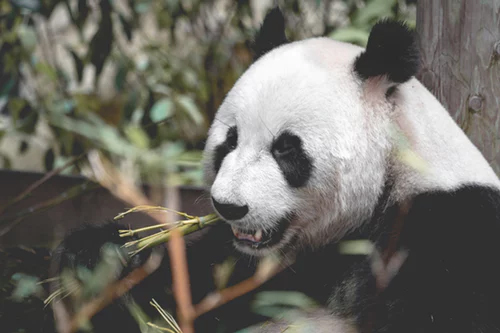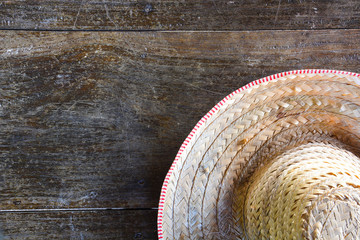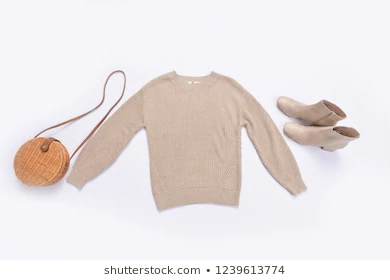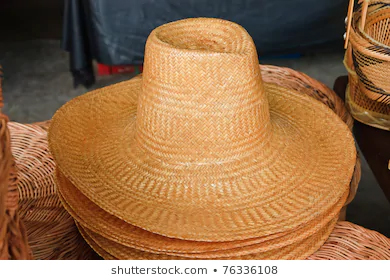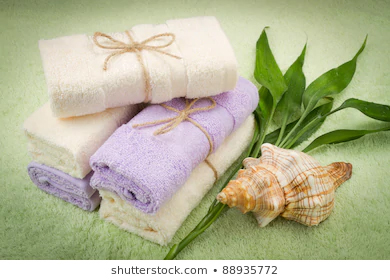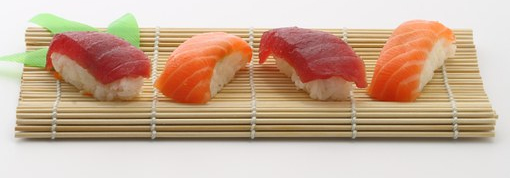BAMBOO CLOTHING
Bamboo clothing, along with home products such as bamboo floors, rugs, blinds, sheets and towels, etc. have seen a surge of popularity in recent years, especially with consumers seeking to make sustainable purchases.
Because of the diversity and unusual qualities of the bamboo plant and the many advantages it offers, manufacturers have made claims that assume the unique properties of the bamboo plant will also be present in the end product, especially with bamboo clothing and other bamboo textiles.
But the truth is bamboo fiber extracted directly from bamboo stalks for use in producing textiles is almost non-existent in the market. Instead, bamboo is usually used as a raw material, a source of cellulose, in the manufacture of rayon (also called viscose) fiber.
The process of producing rayon or viscose fiber includes dissolving the raw material in solvents, thus no properties of the original material would actually be retained in the resulting fiber.
FALSE OR MISLEADING STATEMENTS ABOUT 'BAMBOO FIBER'
Marketing claims about textiles produced using bamboo fiber as a source were originally circulated by manufacturers of rayon (also called viscose) fiber. Retailers in the United States simply accepted the information. Rayon based on bamboo is the same as any other rayon, with the cellulose source conferring no special properties.
The FTC ultimately became involved in warnings to marketers that such claims were misleading.
TEXTILE LABELING and THE FTC (FEDERAL TRADE COMMISSION)
Today, under the Federal Trade Commission's Textile Fiber Products Identification Act and the Textile Fiber Rule, textiles can only be called bamboo if they are made directly from actual bamboo fiber. More information can be found here.
If textiles are made from rayon/viscose using bamboo as the raw material, they may be labeled and advertised as 'rayon (or viscose) made from bamboo.'
Retailers are now responsible for ensuring their textiles are labeled and advertised correctly. Many well-known retailers have been fined for mislabeling textiles, including Amazon, Macy's, and Sears.
If you have purchased or consider purchasing bamboo clothing or linens in the future, please be aware of the labeling and the FTC rules.
Please also note: Bamboo rugs are made with genuine bamboo and the advantages stated in our article on Bamboo Rugs are accurate.
BAMBOO CLOTHING
& OTHER BAMBOO TEXTILES--
ARE THEY REALLY SUSTAINABLE CHOICES?
China is the only country that grows bamboo on a commercial scale and China has no environmental standards set for growing bamboo at this time. There are many environmental costs over time associated with the commercial growing of bamboo without set environmental standards:
- As bamboo becomes more and more profitable, farmers will eventually grow it as the only crop. This can lead to a decrease in biodiversity which can lead to an increase in pests and the use of pesticides will eventually become necessary.
- Chemical fertilizers will be used to increase the yield.
- The destruction of natural forestland will happen in order to grow more bamboo. We have already seen the giant Pandas of China on the endangered list. Over 99% of their diet consists of bamboo.
A crop is not sustainable if it is being intensively harvested or if land clearing is being done to make room for it. And just because bamboo doesn't need pesticides, we have no guarantee from China that they are not being used to maximize outputs.
TWO METHODS OF EXTRACTING FIBER FROM THE BAMBOO PLANT
MECHANICAL
The plants are crushed into a mush, using natural enzymes to break them down. The fibers are then combed out and spun into a yarn. Fabrics using this method of bamboo processing could be sustainable but it is not cost effective.
The fabric produced is often labeled as Bamboo Linen but the processing is labor-intensive and expensive and the fabric produced, though it resembles linen, it is not as soft.
CHEMICAL
The plants are broken down with chemical solvents, mostly sodium hydroxide or lye and carbon disulfide. Both of these chemicals are known to be harmful to human health. Sodium hydroxide can also harm aquatic life when it is released into the water supply.
In summary, the problem here is the mechanical process is not cost-effective and the chemical process is harmful to humans and the environment. Until more sustainable methods of processing bamboo into fabric can be developed, we should not assume bamboo clothing is sustainably and ethically manufactured.
Bamboo - The Wise Man's Timber (Movie)
SUMMARY: BAMBOO OR RAYON?
- Clothing labeled as bamboo is usually actually rayon. The process used to produce rayon is called regenerated cellulosic pulp or viscose. Rayon is the term in the US for the fabric produced from this process and viscose is the term generally used in Europe. It can also be called viscose rayon. After a soak in a lye (sodium hydroxide) solution, the fibers are forced into a sulfuric acid solution to harden them. The process is highly toxic to the workers and not environmentally friendly or sustainable.
- Rayon was the first manufactured fiber and originally used the pulp of mulberry trees. The fiber was called artificial silk or art silk. Later art silk was manufactured on a large commercial scale using cellulose from wood pulp (1900s).
- Because of environmental concerns, viscose rayon is no longer manufactured in the US but the method is used worldwide, especially in Asia and India. The difficulties in cleaning and maintaining clothing, rugs, and upholstery made from rayon are well known in the cleaning profession. These difficulties, as well as shrinkage problems also plague the many other types of 'silk' fibers called by different names but which are all basically viscose rayon.
- Viscose Rayon is known by many different terms besides art silk or artificial silk. There is banana silk, viscose, bamboo silk, allo silk, cactus silk, soya silk modal, cuprammonium, Lyocell (Tencel), and Monocel.
- Lyocell or Tencel (brand name) is one of the latest attempts to produce a man made fiber that uses less toxic chemicals than those used for viscose rayon and it also uses a self-contained process so the chemicals are recovered and not released into the air or water environment. This is a good start, but Tencel is still a type of regenerated fiber (though from eucalyptus trees) similar to viscose and it has some of the issues, especially cleaning, of viscose rayon.
- Legally, in the US, if a product is labeled as bamboo, it must be made directly with bamboo fiber with the mechanical process. There is still much more that needs to be done to make a soft and silky bamboo fiber which is environmentally sustainable as well as cost-effective.
- The FTC has ruled that any fabric made with the viscose process must be labeled as rayon. Depending on which cellulose was used (for ex., wood, eucalyptus, bamboo, etc.), it may then be labeled as rayon coupled with the cellulose used in the process. (For ex., Bamboo Rayon.)
HOW TO CLEAN AND MAINTAIN BAMBOO CLOTHING & OTHER BAMBOO TEXTILES
If you have purchased clothing or textiles properly labeled as Bamboo, here are some tips on how to clean and maintain them:
- Wash in washing machine on gentle cycle with cold or lukewarm water.
- Line drying is recommended. Any kind of heat from machine drying may cause the fabric to lose its shape. If necessary, iron on low heat and never use steam.
- Dry clean any garments that have a tailored effect since the interfacings can lose their shape after washing.
- To prevent pilling, close all buttons and zippers and turn the garment inside out before washing.
- Sweaters and knitted accessories made from bamboo fibers should be hand washed to prevent stretching
- For heavy soil, especially with sheets and towels, allow the items to presoak for at least 15 minutes in warm water and detergent solution in a washer before washing. Bamboo textiles will shrink in hot water.
- Chlorine bleach will weaken the fabric. If fabric needs to be whitened or brightened, use an oxygen based bleach to soak it. For disinfection, chose a pine oil disinfectant.
- For specific stains, follow manufacturer recommendations. Enzyme-based stain removers are safe to use on bamboo before washing.
- Air dry the item flat on an indoor folding rack or outdoor clothesline. If quicker drying than that is needed, use the low heat cycle of the dryer and remove the fabric while still slightly damp. Then iron with a cool iron.
ABC IS HERE TO HELP!
Our staff is here to help you if you have any questions about this or any other cleaning or maintenance topic. We are in the office from 8 to 5 Monday through Thursday, closing at 4:30 on Fridays. We are also open every Saturday from 10am to 1pm.
There are several ways to contact us. On our website, click here. Call or text us at 607-272-1566. Email us at info@abcclean.com. You can text us through Facebook Messenger as well.
"The Cleanest Clean You've Ever Seen."
by
ABC Oriental Rug & Carpet Cleaning Co.
130 Cecil Malone Drive Ithaca, NY 14850
607-272-1566


